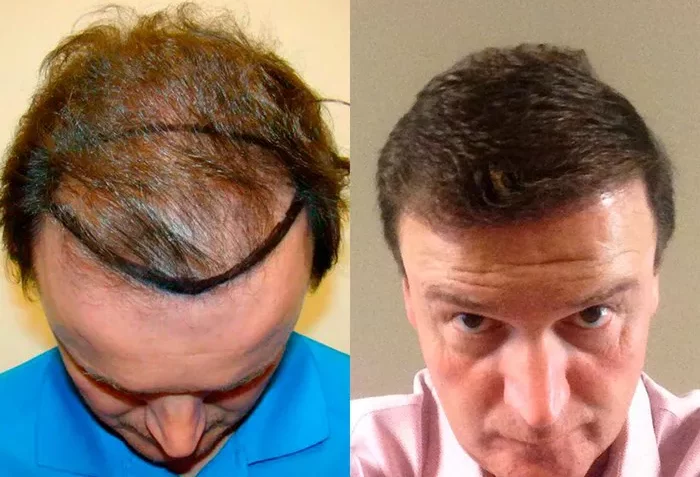Hairline transplants have become a popular solution for individuals experiencing hair loss or thinning, particularly around the hairline. This surgical procedure can restore a youthful appearance and boost confidence. However, many potential candidates have questions about the longevity of hairline transplants. In this article, we will explore how long a hairline transplant typically lasts, the factors influencing its durability, aftercare recommendations, and what to expect throughout the process.
Understanding Hairline Transplants
What is a Hairline Transplant?
A hairline transplant is a surgical procedure that involves transferring hair follicles from a donor site (usually the back or sides of the scalp) to areas with thinning or no hair, specifically around the hairline. The most common techniques used for hair transplants are Follicular Unit Transplantation (FUT) and Follicular Unit Extraction (FUE).
Types of Hairline Transplants
FUT (Follicular Unit Transplantation): In this method, a strip of scalp is removed from the donor area, and hair follicles are extracted from this strip to be transplanted.
FUE (Follicular Unit Extraction): This technique involves individually extracting hair follicles from the donor area and implanting them in the desired location.
Longevity of Hairline Transplants
Average Lifespan of Transplanted Hair
Generally, hairline transplants can last a lifetime, but the visible results may vary. Most patients notice that the transplanted hair begins to grow within a few months after the procedure, with full results typically visible after 9 to 12 months. The hair that grows from transplanted follicles is often permanent, as these follicles are resistant to the hormone DHT (dihydrotestosterone), which is responsible for male and female pattern baldness.
Factors Affecting Longevity
Several factors influence how long a hairline transplant lasts:
Age of the Patient: Younger individuals may experience more aggressive hair loss compared to older patients. This could impact the long-term success of the transplant.
Genetic Factors: Family history of hair loss plays a significant role. If hair loss runs in the family, there’s a higher chance that patients may experience additional thinning over time.
Hair Type: The texture and density of the donor hair can affect the overall appearance and longevity of the transplant. Thicker hair often provides better coverage.
Aftercare: Proper post-surgery care is essential for optimal results. Neglecting aftercare instructions can lead to complications, affecting the transplant’s longevity.
Health and Lifestyle: A patient’s overall health, including conditions like diabetes or autoimmune disorders, can influence hair growth. Lifestyle factors such as smoking, diet, and stress levels also play a role.
The Transplant Procedure
Pre-Procedure Consultation
Before undergoing a hairline transplant, candidates should have a thorough consultation with a qualified surgeon. This includes:
Assessing the extent of hair loss.
Discussing expectations and desired outcomes.
Evaluating donor hair quality and density.
The Surgical Process
Preparation: The scalp is cleaned and anesthetized. The surgeon will then decide between FUT or FUE based on the patient’s needs.
Harvesting: In FUT, a strip of hair is removed, while in FUE, individual follicles are extracted.
Implantation: The harvested follicles are meticulously implanted into the hairline area, following a natural hair growth pattern.
Post-Procedure Care: Patients receive instructions on how to care for the transplanted area, which is crucial for recovery.
Aftercare for Optimal Longevity
Immediate Post-Op Care
Avoid Touching the Area: Patients should avoid touching or scratching the transplant area to prevent dislodging the follicles.
Medications: Surgeons often prescribe antibiotics and anti-inflammatory medications to minimize the risk of infection and swelling.
Avoid Sun Exposure: Protecting the scalp from direct sunlight is essential in the initial healing phase.
Long-Term Care
Follow-Up Appointments: Regular check-ups with the surgeon can help monitor progress and address any concerns.
Scalp Care: Using gentle, sulfate-free shampoos and avoiding harsh hair products can promote a healthy scalp.
Minimize Heat Styling: Limiting the use of heat-styling tools can reduce damage to the hair.
Healthy Lifestyle Choices: Eating a balanced diet rich in vitamins and minerals can support hair health. Supplements like biotin or other hair-specific vitamins may also be beneficial.
What to Expect After a Hairline Transplant
Healing Process
The healing process can vary from person to person, but generally, patients can expect:
Initial Shedding: It’s normal for transplanted hair to shed within the first few weeks. This is often referred to as “shock loss.”
Regrowth: New hair growth typically begins around 3 to 4 months after the procedure, with significant results visible after about 9 to 12 months.
Monitoring Results
Patients should monitor their results and consult with their surgeon if they notice any issues, such as:
Uneven hair growth.
Persistent redness or irritation.
Signs of infection.
Potential Risks and Complications
While hairline transplants are generally safe, potential risks include:
Infection: As with any surgical procedure, there is a risk of infection at the donor or recipient site.
Scarring: FUT may result in linear scarring at the donor site, while FUE can leave tiny scars that may be less noticeable.
Unnatural Appearance: If not done correctly, the hairline can appear unnatural, highlighting the need for an experienced surgeon.
Conclusion
A hairline transplant can be a life-changing procedure, providing a permanent solution for hair loss when performed correctly and followed by proper care. On average, transplanted hair can last a lifetime, but various factors can influence longevity. Understanding these factors and adhering to aftercare recommendations can significantly enhance the results of the procedure. For anyone considering a hairline transplant, it is essential to consult with a qualified professional to discuss expectations and potential outcomes, ensuring a successful journey toward restored confidence and appearance.
Related topics:
- Where Do They Get Hair for Hair Transplants? A Complete Guide
- Sapphire FUE Hair Transplant: The Ultimate Guide
- When Is It Too Late for a Hair Transplant? A Full Guide


